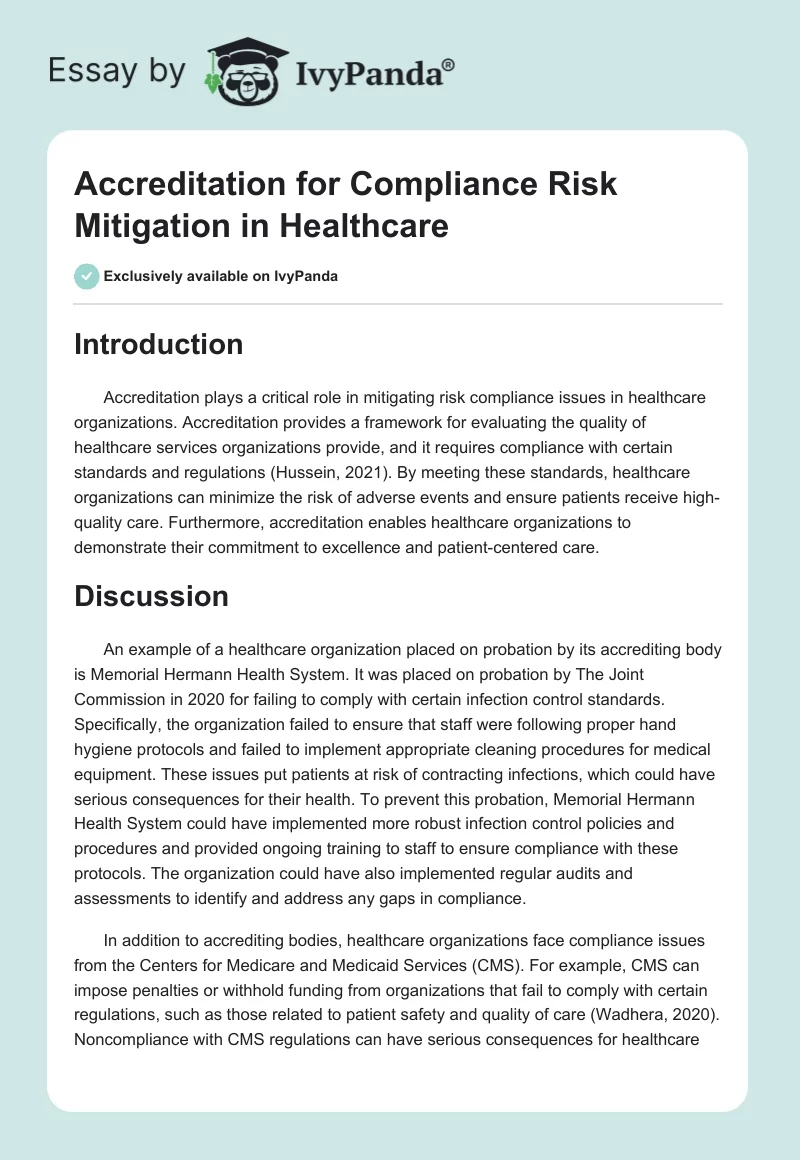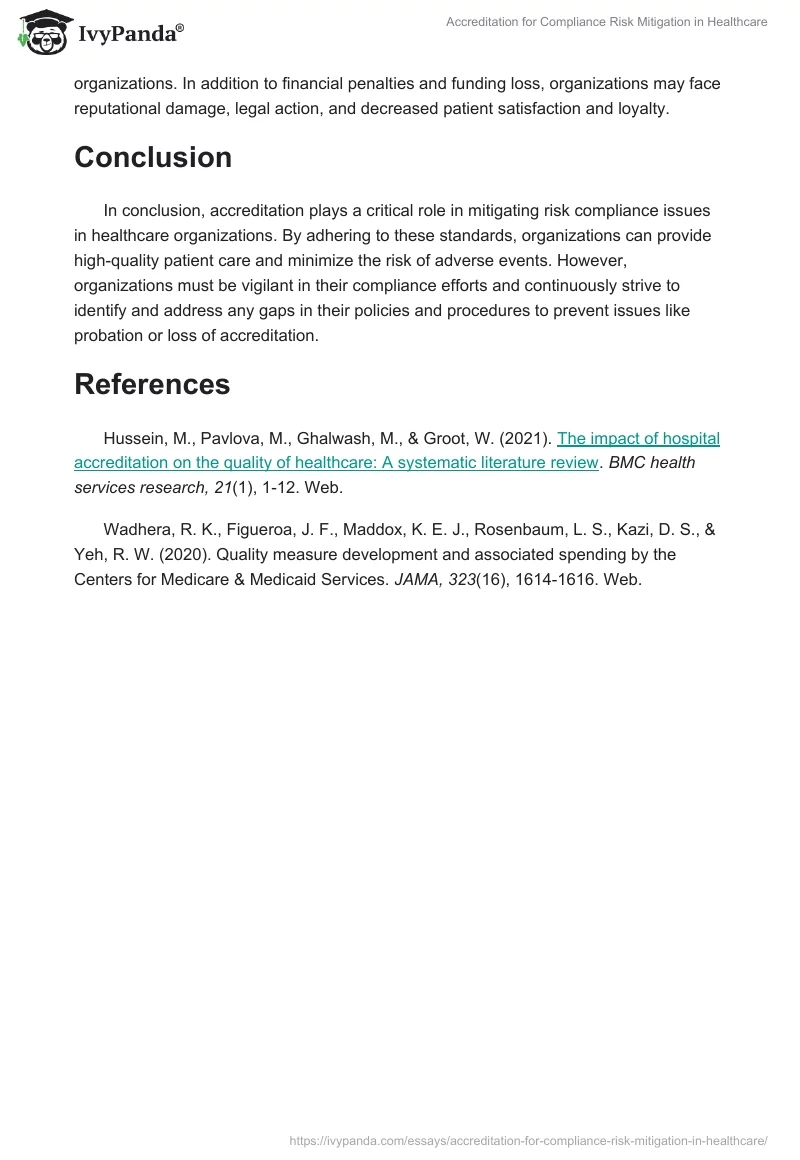Introduction
Accreditation plays a critical role in mitigating risk compliance issues in healthcare organizations. Accreditation provides a framework for evaluating the quality of healthcare services organizations provide, and it requires compliance with certain standards and regulations (Hussein, 2021). By meeting these standards, healthcare organizations can minimize the risk of adverse events and ensure patients receive high-quality care. Furthermore, accreditation enables healthcare organizations to demonstrate their commitment to excellence and patient-centered care.
Discussion
An example of a healthcare organization placed on probation by its accrediting body is Memorial Hermann Health System. It was placed on probation by The Joint Commission in 2020 for failing to comply with certain infection control standards. Specifically, the organization failed to ensure that staff were following proper hand hygiene protocols and failed to implement appropriate cleaning procedures for medical equipment. These issues put patients at risk of contracting infections, which could have serious consequences for their health. To prevent this probation, Memorial Hermann Health System could have implemented more robust infection control policies and procedures and provided ongoing training to staff to ensure compliance with these protocols. The organization could have also implemented regular audits and assessments to identify and address any gaps in compliance.
In addition to accrediting bodies, healthcare organizations face compliance issues from the Centers for Medicare and Medicaid Services (CMS). For example, CMS can impose penalties or withhold funding from organizations that fail to comply with certain regulations, such as those related to patient safety and quality of care (Wadhera, 2020). Noncompliance with CMS regulations can have serious consequences for healthcare organizations. In addition to financial penalties and funding loss, organizations may face reputational damage, legal action, and decreased patient satisfaction and loyalty.
Conclusion
In conclusion, accreditation plays a critical role in mitigating risk compliance issues in healthcare organizations. By adhering to these standards, organizations can provide high-quality patient care and minimize the risk of adverse events. However, organizations must be vigilant in their compliance efforts and continuously strive to identify and address any gaps in their policies and procedures to prevent issues like probation or loss of accreditation.
References
Hussein, M., Pavlova, M., Ghalwash, M., & Groot, W. (2021). The impact of hospital accreditation on the quality of healthcare: A systematic literature review. BMC health services research, 21(1), 1-12. Web.
Wadhera, R. K., Figueroa, J. F., Maddox, K. E. J., Rosenbaum, L. S., Kazi, D. S., & Yeh, R. W. (2020). Quality measure development and associated spending by the Centers for Medicare & Medicaid Services. JAMA, 323(16), 1614-1616. Web.


